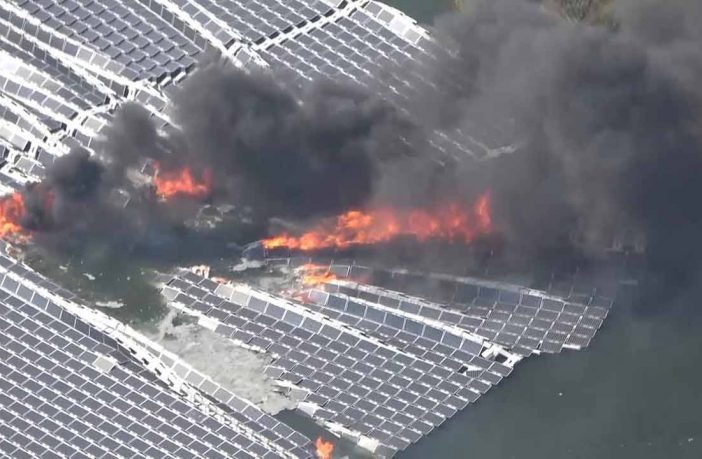- Kyocera’s 13.7 MW floating project at the Yamakura Dam was damaged by 120mph winds the typhoon brought to the coastal city of Chiba.
- Firefighters said the blaze may have been generated by the strong heat produced by panels stacking up.
Typhoon Faxai arrived this morning at the coastal city of Chiba and has already shown its destructive power: around 100 flights were cancelled and 1 million households were without electricity amid extensive damage to buildings and infrastructure.
And the strong rain and winds claimed another victim: Japan’s largest PV power plant, inaugurated by Kyocera in March 2018 at the Yamakura Dam in Ichihara City.
Japanese media reported the wind tore several modules off the project and stacked them. That contact between loose panels and those that remained moored to mounting structures, said firefighters, overheated the modules, creating the conditions for a fire.
The YouTube channel of the Asahi Shimbun newspaper showed the extent of the fire that, according to firefighters, involved around 50 panels.
The solar plant covers around 44 acres of water and features 50,904 solar modules provided by Kyocera Corporation.
A Kyocera spokesperson told pv magazine the fire was extinguished at around 5.20pm local time and the extent of the damage caused was under investigation.
All the power generated by the project – which was started by the Public Enterprises Agency of Chiba Prefecture to reduce the organization’s environmental impact – is sold to TEPCO Energy Partner Incorporated.
Author: Emiliano Bellini
This article was originally published in pv magazine and is republished with permission.![]()











